Growing a Giving Garden
There are many ways to give to a food bank. People have given their time in the form of volunteering, donations in the form of non perishable items; such as rice, pasta, snacks, cooking oils and canned goods, and hosted fun(d) drives, to name a few. These are all wonderful, necessary, and fun ways to get involved with your community! A crucial pillar to our mission is to provide fresh nutritious produce to our food guests. That’s one of the reasons people love RVFB! While purchasing produce for our guests is necessary- due to the sheer volume we serve- community gardens and p.patches have gotten involved through “growing a row” for our Food Bank. Partnering with our local food system through the Giving Garden program has allowed us to build partnerships across our community while nurturing our guests with fresh, community grown, good food.
Grow a Giving Garden!
Local gardens and P-Patches partner with Food Banks and coordinate planting rows, beds, even dedicating entire plots, to growing produce on their behalf. This concept is not limited to p-patches. Individuals, community gardens, and neighbors partake in this method of giving! “But where do I begin,” you might ask. Thanks to Lettuce Link- a program of Solid Ground, they put together a comprehensive guide that will walk you through growing a giving garden; including tips, best practices, and how to give after you grow!
Giving Gardening: Tips & Best Practices
Creating a Giving Garden plot at a P-Patch
Put signs in the plot to inspire others to grow and give a little extra.
Include the Giving Garden/Food Bank Plot in EVERY garden work party. Connect with your work party leaders so they know how the importance of others helping you.
Pick a consistent time and day to deliver donations. Ideal times to deliver are the morning that a food bank/meal program is open, or the day before.
Share where the produce is going. People are more likely to donate if they know where and to whom the produce is going.
Collect produce in a cool spot. Some gardens use coolers, others have a shady storage area. Sprinkle greens with water to keep them fresh when it’s hot.
Gleaning & Promoting
Planting Extra for Donation at a P-Patch
Post clear and easy to read signs asking others in the garden to donate. Talk up donating produce at all garden events, work parties and potlucks. Lettuce Link can help create and laminate signage for your garden.
o Make sure everyone knows when produce donations are delivered. People can plan to donate the day before the delivery.
o Late summer is a good time for outreach. The bumper crops are coming in, people are going on vacation, and gardeners often end up with extra produce.
Promote Plant a Row for the Hungry. Have individual gardeners agree to plant a crop, such as green onions or lettuce, at the same time and mark the crop with a row marker. When the crop is ready, send an email out or put up a sign, and have a harvesting party.
o You can also designate a section of each participating gardener’s plot that is always for donation. As long as it’s clearly labeled, the gleaning team can just harvest whatever is planted there.
Schedule a few gleaning days throughout the summer. Advertise to your gardeners at least a week ahead of time so that they can plan to donate.
Connect with another garden and deliver your gleaned produce to them. Interbay, Picardo, Delridge, Ballard, Magnuson, and others have regularly scheduled food bank deliveries during the summer and fall months.
Remind gardeners about gleaning. At the Ballard P-Patch, they have three types of stakes:
o “?” stake: Means, “Would you like us to harvest this?” [this stake is placed in a garden by you or other giving garden volunteers]
o “YES” stake: Means, “Please harvest my produce.” [Gardener removes “?” stake and replaces with this one]
o “NO” stake: This means, “I will harvest my own produce.” [Gardener removes “?” stake and replaces with this one]
o Note: This will only work if you are set up to send a volunteer or two out to do the harvesting. A simpler version uses one “harvest” stake, which a gardener who is too busy to harvest or out of town places in their plot.
Successful P-Patch Giving
Who should receive the produce? Growing for Giving can take many formats, and you should decide what works best for you. Giving Gardens in Seattle donate produce in many ways, including:
Donating to a Food Bank or meal program
Donating to housing programs or buildings for low-income seniors or families
o One way to do this is to set up a free farmers market style distribution where residents can come and pick out the produce they want
Donating directly to people in the community who have trouble affording fresh produce
o Fellow gardeners who may not be able to grow as much food as they need
o Neighbors who are not able to garden for themselves
o Individuals in communities you are part of (religious communities, schools, etc…) Some things to think about:
Are there people in your immediate community who could benefit from donated produce (neighbors, fellow gardeners, members of your religious community)?
Is there a Food Bank or Meal Program close to your garden?
How often will you be able to donate? How often is the place you want to donate to open?
For a list of Food Banks and Meal Programs in the Seattle area, please visit https://foodlifeline.org/need-food
Setting Up a Giving Gardening Program
Identify a coordinating team of at least two people.
o Gardens with a designated plot: One person can plant and harvest, the other can deliver.
o Gardens without a designated plot: One person can spread the word to the gardeners and help them glean, and the other person can deliver.
Create a system that works for your garden. Some gardens like to have regular work parties. Others prefer to let folks tend the Giving Garden whenever they’re around. Listen to the culture and habits of your garden and find a system that works for you.
Ask for help. People sometimes assume that no one else in the garden that wants to help, when there are gardeners who want to help but don’t feel included. Create a brief Giving Garden job description and distribute it to your gardeners. Lettuce Link can share examples from other gardens.
o If there is a big project (turning the soil, building up a raised bed, etc…), you might find groups outside the garden to help as well. Girl Scout and Boy Scout troupes are often a good place to start.
Find the right job for the right volunteer. The food bank garden coordinator may not be best person to outreach to others in the garden, but someone else may love that job.
Seek out talented gardeners. Ask them to share their expertise with others and donate some of their high-quality produce.
Host a glean-out day. Ask everyone in the garden to donate something from their plot on a particular day. Create a system so that gardeners who aren’t present can let you know ahead of time what you can harvest from their plots. Harvest, and deliver to the food bank.
Pair work with fun! Have a potluck, bring some snacks, or otherwise invite people to stick around after the work party to socialize. This is also a great time to learn from each others’ gardening experience.
Creating a backyard Giving Garden
You can set up a Giving Garden even if you’re not part of a P-Patch! Here are some ideas for setting up a backyard
Giving Garden:
Plant an extra row of something that grows well specifically to donate
Connect to your local P-Patch’s Giving Garden and add your donation to theirs.
o Visit http://www.sggn.org for a list of Giving Gardens
Contact your local Food Bank or Meal Program to find out what they would want donated
o For a list of Food Banks and Meal Programs in the Seattle area, please visit https://foodlifeline.org/need-food
If you have a lot of space, get help! Find friends or neighbors who want to help grow for giving.
o Contact Lettuce Link for ideas on how to recruit volunteers to your new Giving Garden: lettucelink@solid-ground.org or 206.694.6754.
Gardening Tips
Plant fewer crops. Food banks appreciate larger quantities of a few items.
Harvest in batches. Plant crops, such as green onions or lettuce heads, which you can harvest all at once.
Use succession planting. Sow the same seeds every few weeks for multiple harvests throughout the growing season.
Grow herbs. Package them in bunches or tied with a string. Label herbs – often people have never seen them fresh!
Connect with the program you are growing food for. Know their client demographics and what food people like to eat. The food bank or site coordinator can be a great ally.
Wash produce and place in boxes or bins. Check with your location about their packaging preferences.
Weigh and track your donations. Share the totals with your fellow gardeners and celebrate your accomplishments! Lettuce Link can provide scales. See produce donation record below.
When growing for a food bank, it is preferable to grow a large volume of a single crop, harvest and then sow another crop. Although, ripening time varies depending on the weather. Talk to other gardeners to see what they are planting and when they are planting.
Tips for Processing & Donating Produce
Wash produce and place in boxes or bins. Check with your location about their packaging preferences.
Bring the food in before the food bank opens. This gives volunteers and staff enough time to process your donation. Deliver produce within 24 hours of harvest.
Label less common produce, such as kale, chard, fancy greens, herbs, and odd-colored squash. Even if it’s familiar to you, it may not be to food bank staff or clients.
Weigh and track your donations. Share the totals with your fellow gardeners and celebrate your accomplishments! Lettuce Link can provide scales.
Bring the food in before the food bank opens. This gives volunteers and staff enough time to process your donation. Deliver produce within 24 hours of harvest.
Label less common produce, such as kale, chard, fancy greens, herbs, and odd-colored squash. Even if it’s familiar to you, it may not be to food bank staff or clients.
Resources for Giving Gardens : Seeds, Starts & Materials
Lettuce Link can provide Giving Gardens with free seeds, plant starts, and garden signs. Contact them for more information: lettucelink@solid-ground.org or 206.694.6754.
Seeds are available year-round, but get yours early in the season for the best selection!
Plant starts are provided by A Growing Community, a volunteer-run greenhouse project in Wallingford and Ballard. Starts are available by request from April – June
Fundraising
Beyond seeds, starts and signs, there are always infrastructure projects that come up in a Giving Garden. There are a number of fundraising resources available to Giving Gardeners:
GROW (formerly the P-Patch Trust) can help gardens brainstorm ideas on how to fundraise for projects. This is available to P-Patch gardens only.
The City of Seattle offers Neighborhood Matching Fund grant opportunities for small projects.
Seattle’s Giving Garden Network is full of people who have innovative ideas for raising money. Post a question, read through past discussions, and contact the group on-line.





